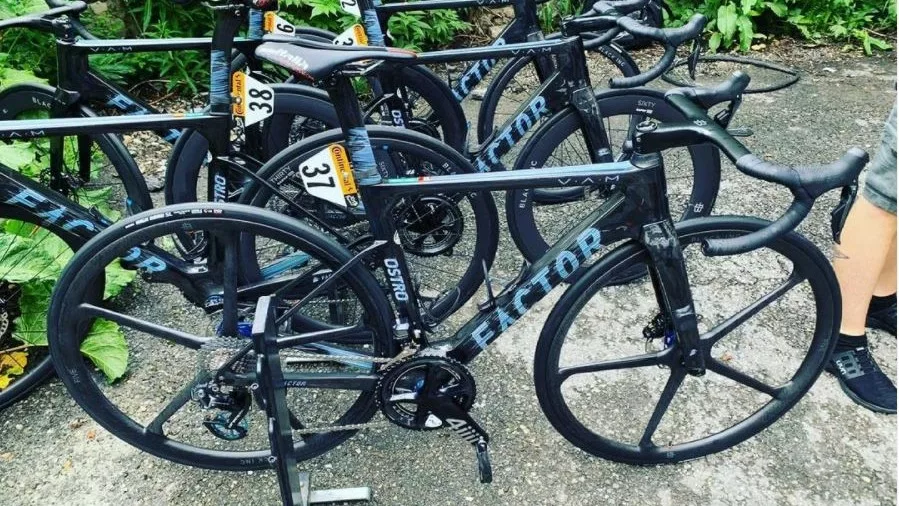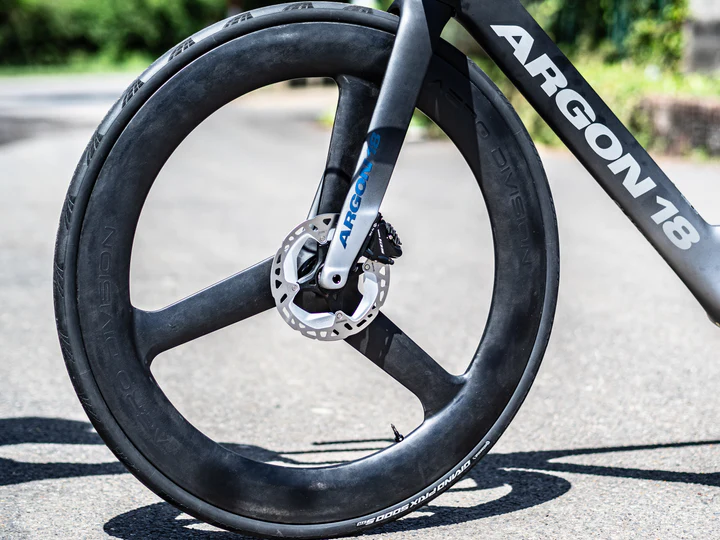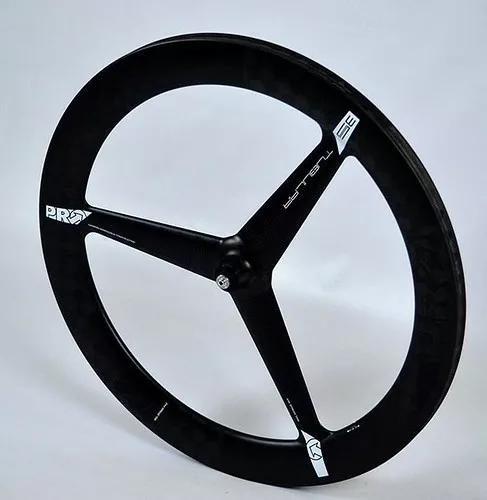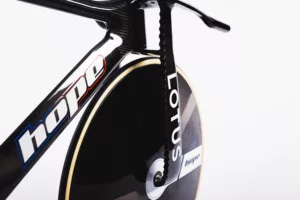In the world of competitive cycling, aerodynamics plays a crucial role in performance. This article delves into the aerodynamic advantages of 3 and 5 spoke wheels, popular choices among cyclists looking to maximize their speed. We’ll explore how these uniquely designed wheels contribute to reduced air resistance and increased efficiency, comparing them to traditional spoked wheels. Whether you’re a professional racer or an enthusiast aiming to improve your personal best, understanding the aero gains offered by these wheel designs can be a key factor in enhancing your cycling experience.
Table of Contents
ToggleWhat are the Aerodynamic Benefits of 3 and 5 Spoke Wheels?
The aerodynamic benefits of 3 and 5 spoke wheels are significant, particularly for competitive cyclists. The design of these wheels reduces air resistance, allowing the cyclist to maintain higher speeds with less effort. This is due to the reduced number of spokes, which decreases the amount of turbulence created as the wheel spins.
The shape of the spokes also plays a crucial role in the aerodynamics of the wheel. The spokes on 3 and 5 spoke wheels are typically wider and more streamlined than those on traditional wheels. This design further reduces air resistance and allows the wheel to cut through the air more efficiently.
In addition to improving speed, the aerodynamic design of 3 and 5 spoke wheels can also enhance stability. The reduced air resistance can make the bike less susceptible to crosswinds, providing the cyclist with greater control.
However, it’s important to note that the aerodynamic benefits of 3 and 5 spoke wheels can vary depending on factors such as the rider’s position, the type of bike, and the riding conditions. For example, these wheels may offer less advantage in uphill climbs where weight and gravity play a larger role than aerodynamics.

How Do 3 and 5 Spoke Wheels Compare to Traditional Wheels in Terms of Performance?
When comparing 3 and 5 spoke wheels to traditional wheels, the primary difference lies in their performance in different riding conditions. In flat and downhill terrains where aerodynamics play a significant role, 3 and 5 spoke wheels often outperform traditional wheels.
The aerodynamic design of 3 and 5 spoke wheels reduces drag, allowing the cyclist to maintain higher speeds with less effort. This can be particularly beneficial in races and time trials where every second counts.
However, in uphill climbs and technical terrains, traditional wheels may have the upper hand. The lighter weight of traditional wheels can make them easier to manoeuvre, and they may also offer better acceleration due to their lower rotational mass.
In terms of durability, 3 and 5 spoke wheels are typically more robust than traditional wheels. Their solid construction makes them less prone to damage and deformation, making them a good choice for rough and demanding conditions.

What is the Impact of Wheel Design on Speed and Efficiency?
Wheel design can have a significant impact on a bike’s speed and efficiency. The number and shape of the spokes, the material of the wheel, and the overall design can all affect how the bike performs.
3 and 5 spoke wheels are designed to maximise aerodynamic efficiency. The reduced number of spokes decreases air resistance, allowing the bike to move faster and more efficiently. The wider, streamlined shape of the spokes also helps to reduce drag and improve stability.
The material of the wheel can also affect its performance. Carbon fibre, for example, is a popular choice for 3 and 5 spoke wheels due to its light weight and high strength. These properties can enhance the bike’s speed and efficiency, particularly in flat and downhill terrains.
However, it’s important to note that wheel design is just one factor that can affect a bike’s performance. Other factors, such as the rider’s skill and fitness level, the type of bike, and the riding conditions, can also play a significant role.
Are There Any Disadvantages to Using 3 and 5 Spoke Wheels?
While 3 and 5 spoke wheels offer several advantages, they also have some potential disadvantages. One of the main drawbacks is their weight. Due to their solid construction, 3 and 5 spoke wheels are typically heavier than traditional wheels. This can make them less suitable for uphill climbs and other situations where a lighter wheel might be beneficial.
Another potential disadvantage is cost. 3 and 5 spoke wheels are often more expensive than traditional wheels, which can make them a less accessible option for some cyclists.
Finally, 3 and 5 spoke wheels may offer less flexibility in terms of tyre choice. Due to their unique design, these wheels may not be compatible with all types of tyres. This can limit the rider’s options and potentially affect the bike’s performance in different conditions.
How Significant are the Aero Gains from 3 and 5 Spoke Wheels?
The aero gains from 3 and 5 spoke wheels can be significant, particularly for competitive cyclists. By reducing air resistance, these wheels can allow the cyclist to maintain higher speeds with less effort. This can be a major advantage in races and time trials where every second counts.
However, it’s important to note that the actual aero gains can vary depending on several factors. These include the rider’s position, the type of bike, the riding conditions, and the specific design of the wheel.
For example, a well-designed 3 or 5 spoke wheel can offer significant aero gains in flat and downhill terrains. However, in uphill climbs, the heavier weight of these wheels may offset their aerodynamic advantages.

What are the Best Conditions for Using 3 and 5 Spoke Wheels?
Redcued spoke count wheels are best suited to conditions where aerodynamics play a significant role. This includes flat and downhill terrains, as well as situations where maintaining a high speed is crucial, such as races and time trials.
The aerodynamic design of these wheels reduces air resistance, allowing the cyclist to maintain higher speeds with less effort. This can give the cyclist a significant advantage in the right conditions.
However, in uphill climbs and technical terrains, the heavier weight of these wheels may make them less suitable. In these situations, a lighter wheel might offer better performance.
How Do 3 and 5 Spoke Wheels Affect Handling and Control?
3 and 5 spoke wheels can affect a bike’s handling and control in several ways. The reduced air resistance of these wheels can make the bike less susceptible to crosswinds, providing the cyclist with greater control.
However, the heavier weight of these wheels can make them less agile than traditional wheels. This can affect the bike’s handling, particularly in uphill climbs and technical terrains.
The solid construction of these reduced spoke carbon wheels can also enhance their stability. This can improve the bike’s handling, particularly at high speeds and in demanding conditions.

Are 3 and 5 Spoke Wheels Suitable for All Types of Cycling?
3 and 5 spoke wheels are versatile and can be used for a variety of cycling disciplines. However, they are particularly well-suited to road cycling, where their aerodynamic advantages can be fully utilised.
In flat and downhill terrains, the reduced air resistance of these wheels can allow the cyclist to maintain higher speeds with less effort. This can be particularly beneficial in races and time trials.
However, in uphill climbs and technical terrains, the heavier weight of 3 and 5 spoke wheels may make them less suitable. In these situations, a lighter wheel might offer better performance.
It’s also worth noting that the solid construction of 3 and 5 spoke wheels makes them a good choice for rough and demanding conditions. Their robust design makes them less prone to damage and deformation, enhancing their durability and lifespan.






